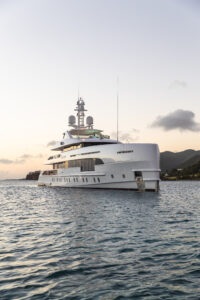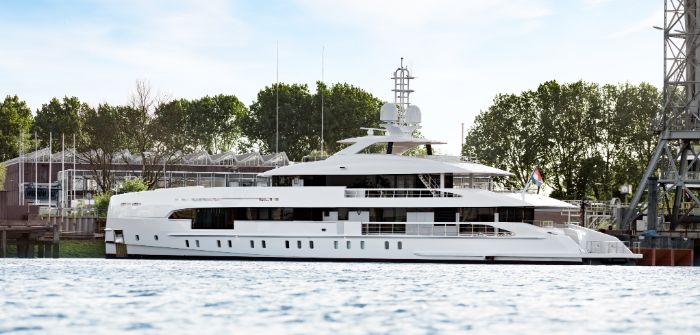Heesen’s second aluminum-hulled hybrid yacht combines two diesel engines with two electric motors to deliver near-silent cruising and a notable efficiency upgrade.
In the maritime world, the superyacht industry, which focuses on a market of high net worth individuals and luxury equipment, is not known for its innovation and use of hybrid and electrical power and propulsion.
However, there are some companies that are starting to take the initiative to introduce these systems into their vessels as a way of assessing market demand and to offer a new and different product.
Heesen Yachts is one such business. In March the shipyard announced the sale of its second aluminum-hulled hybrid electric yacht, YN 19150 Project Electra. The 50m (164ft) vessel, which displaces 499 tons, was designed by Oossanen Naval Architects with the purpose of optimizing fuel efficiency while providing near-silent cruising with zero vibrations using an ultra-slippery fast displacement hull form (FDHF) design.
The power and propulsion system is two standard MTU 12V 2000 M61 diesel engines and two Danfoss Editron PDR-XSe-3200-T660 electric shaft motors connected to a gearbox that can be powered by two Zenoro DC generators. For superyachts, DC generators are more suitable than AC because they can carry much higher loads over distance and the motor is much smaller. DC motors are also useful because they can be used as variable speed generators that can adjust their speed to match the power required.
Using this system means that the superyacht owners have more power and propulsion options. There are four modes overall. The first is standard cruising mode whereby the owner can run the ship like a conventional yacht, with the main engines providing power to the propulsion system and the generators devoted to supporting the hotel load requirements such as heating, lighting, cooking, pumps and air-con.
Under hybrid mode the main engines are switched off and the DC generators can power the two 127kW DC motors to provide both propulsion and the hotel load while maintaining a top speed of about 10kts. The third mode is sprint or boost mode, which employs both main engines for propulsion, with the generators providing the hotel load and also powering the shaft motor to give an overdrive to reach over 16kts.
The final mode is the economic option whereby the generators are switched off and the shaft motors act as generators to provide electricity for the hotel load, which means the boat can be powered for long periods
with just the main engines running. With the generators switched off, fuel consumption drops significantly and it also helps reduce the maintenance requirements as they are used for less time. This mode is often used for transoceanic crossings, where the yacht can sustain 12-14kts.
Be the change
The reason a hybrid system like this can be installed in the first place is that the FDHF design allows the boat to move through the water more efficiently; it is more slippery and has lower levels of drag. This means the yacht can be powered with smaller engines while still being able to achieve similar speeds to traditionally designed steel yachts. It makes a hybrid system attractive because the generators and shaft motors are not large but can still provide 10kts of speed.
MTU was contracted by Heesen to provide the entire propulsion system and Dutch company Huisman was used for the electrical installation. It was Heesen’s job to ensure the components operated together, along
with a power inverter that changed the DC electricity produced by the generators into the AC electricity on which the yacht’s hotel load runs.
Although the propulsion system itself is not particularly revolutionary as there is no new technology – it merges existing standard diesel engines and hybrid electric systems – the decision to combine the three elements, design a whole new system and install it on a superyacht is a big advance in the sector.
Mark Cavendish, Heesen Yachts’ sales and marketing director, says that the decision to take on the project was the company’s alone. “It was a 100% Heesen decision to go ahead and develop the system, physically install it on the boat and see what the market reaction would be,” he says. “We took quite a big risk doing that. In hindsight, we were probably aware that we were a little early to the market because it is quite unusual. There doesn’t seem to be a big ground swell at the moment.”
Battery benefits
While Heesen’s decision to pursue a hybrid propulsion solution was not driven by any specific customer requirement for a hybrid superyacht, Cavendish believes there is a demand for more fuel efficiency in the sector and this is the best possible way to deliver that capability.
“We thought it was better to actually do it and put it out there rather than just design it and wait for somebody to maybe come along and buy it,” he says. He admitted that the hybrid solution added about €1m (US$1.1m) to the total cost of the project, so it was not exactly cheap, but as this made up about 3% of the €35m (US$38.6m) cost of the vessel, it was considered worth the investment.
However, a solution using batteries was not sufficient to meet the desire for a quieter cruising mode. While battery technology is developing quickly, it is not yet at a stage where it can deliver enough electricity for propulsion for any length of time or extended use at anchor. Cavendish explains that for batteries to have any meaningful effect on the boat, “large quantities are needed” and “They are heavy, expensive and don’t have a long life. This makes them self-defeating.”
For larger yachts there could be some applications, but it is still limited. Heesen is building an 80m (260ft) yacht called Cosmos that has a battery bank. Its propulsion system uses peak shaving tech, whereby when the generators are running, any excess electricity produced is used to charge the batteries. It can’t propel the ship but it can be used at anchor to run some systems quietly, such as lighting and air-conditioning. This is an attractive option for some owners who don’t want the noise of a generator or exhaust gas when stationary.
Other options such as solar power could not provide enough power, and hydrogen and fuel cell technology was considered too early in its development. Cavendish says that if an owner wanted to try a project with this kind of system then Heesen would likely comply, but it would not be something that a shipyard like his would speculatively build in the way that it could with this hybrid solution.
Unlike batteries, the hybrid system is an important first step for the superyacht sector because it allows the option to cruise or maneuver much more quietly, at noise levels of just 46dB at 10kts. The efficiency and fuel saving statistics also sound impressive when compared with steel-hulled yachts of similar displacement. Cavendish says that because the boat is constructed of aluminum, it needs only two 600kW engines instead of two 1,000kW engines, meaning that the same performance can be achieved with just 60% of the power used on a steel boat. “So you have a 40% saving in kilowatts there alone,” he says.
“The other interesting statistic is that the average 50m steel displacement yacht will need about 60,000 liters [15,850 gallons] of fuel to give about 3,500 nautical miles of range. Electra does this with 45,000 liters [11,900 gallons] of fuel, a saving of 15,000 liters [3,950 gallons], so you can immediately see you need 25% less fuel to travel the same distance. Those are pretty stunning numbers. The fuel consumption is 98 l/h [26 gal/h] in standard cruising mode and very low in hybrid mode at just 75-80 l/h [20-21 gal/h] at 10kts.”
Environmental concerns are now just as important for the superyacht sector as for other maritime sectors. Tier 3 exhaust emissions regulations are already in place for yachts over 500 tons and from January 2021 all yachts will have to adhere to the rules and reduce NOX and SOX emissions from the main engines and generators.

Despite these industry developments, the superyacht industry is moving slowly to change its power and propulsion offerings on the market. “99.9% of shipyards are still building conventional yachts and it seems to be what most of the market wants at this moment in time,” comments Cavendish. “It is the sclerotic and conservative nature of the superyacht industry, whereby feet are dragged through liquid concrete before anyone decides to change.”
He added that there are some shipyards that have tried out hybrid technology, “But so far Heesen is the only one to have actually done this on its own account and brought it to market as a viable option, rather than just as an experimental program,” he notes.
Despite this, Cavendish sees the successful sale of Electra and its sister ship Home as, in his words, the dawning of a new generation in the marine industry: “We wanted to develop something that was really different but still meaningful,” he says. “We didn’t want to do this as a gimmick – it would be too expensive to work as a gimmick anyway – but something worthwhile and useful to owners. I think this ability to cruise very quietly with low fuel consumption is an attractive option and I really believe that we will soon start to see more of it.”
By Tim Fischt



